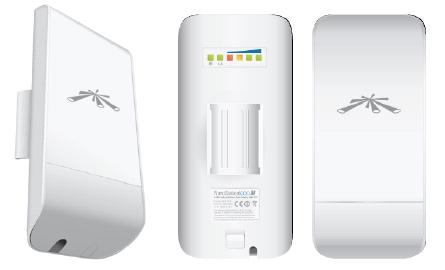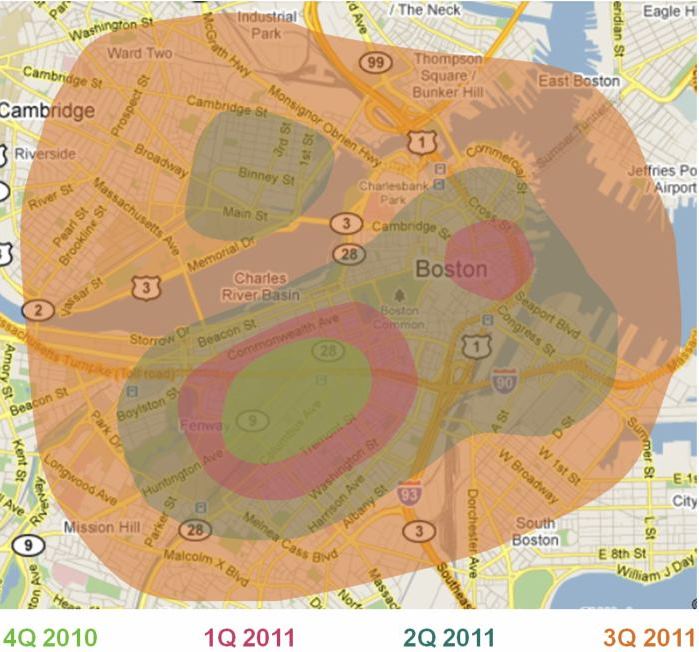LTE in unlicensed and shared spectrum remains at an “early stage” worldwide with interest “high,” according to a report published by the Global Mobile Suppliers Association (GSA). Technologies discussed in the report include LAA, eLAA (LAA with uplink support), LTE-U, LWA (LTE Wireless-LAN Aggregation), LWIP (LTE WAN Integration with IPSec tunnel), and US-oriented CBRS. These are described in the report.
Archive for the ‘Unlicensed’ Category
GSA reports on status of LTE in unlicensed and shared spectrum
Thursday, January 17th, 2019Concurrent multi-band Wi-Fi floated in IEEE 802.11
Wednesday, May 31st, 2017A proposal for concurrent multi-band Wi-Fi was brought into the most recent meeting of working group IEEE 802.11. Similar to how mobile broadband can use multiple bands at the same time, the proposal would allow a Wi-Fi connection to use the 2.4 and 5 GHz bands simultaneously. Data would be split based on instantaneous channel conditions.
Tracking LTE in unlicensed spectrum, and related technologies
Thursday, April 20th, 2017IEEE 802 and 3GPP step up collaboration on LAA
Monday, March 23rd, 2015IEEE 802 and 3GPP are working together more on coexistence of Licensed Authorized Access (LAA) and Wi-Fi. Since November, each group has made a presentation to the other. There’s been an exchange of liaison statements, the latest on March 18 when IEEE 802 sent 3GPP two statements containing several requests and recommendations.
Google files “confidential” application with FCC for drone tests in New Mexico
Monday, September 15th, 2014Google has filed an application with the FCC to conduct drone tests in New Mexico. The company has sought confidential treatment of its application form and exhibits. All we have to go by now is one exhibit that’s been redacted for public consumption. Google provides some detail, and we can try to infer some more.
Jarvinian files second experimental application for Globalstar/Wi-Fi tests
Sunday, March 10th, 2013Last month I wrote about the Jarvinian Wireless Investment Fund and its application to the FCC to test its proposed terrestrial low-power service (TLPS). TLPS would use both the upper 2.4 GHz unlicensed band and Globalstar’s terrestrial-use spectrum (2473-2495 MHz all in all). That test would take place in Cambridge, Massachusetts.
Jarvinian is back with a second application, similar to the first, but with testing taking place at three locations in Silicon Valley (Sunnyvale and Cupertino, California). The supporting technical exhibit appears essentially the same. Different is the equipment to be used. The Cambridge application specified 50 Linksys WRT54GL access points, 10 Ubiquity UniFi access points, 10 Ubiquity XR2 client cards, and 10 Ubiquity SR-71-12 client cards. The Silicon Valley application specifies 10 TP-LINK TL-WA5110G access points, 20 TP-LINK TL-WR1043ND access points, and 20 Ubiquity SR-71-12 client cards.
This application was received by the FCC on March 6. The Cambridge application was received February 13 and is still pending.
FCC to move on 5 GHz, but no faster nor further than NTIA
Friday, February 15th, 2013At its February 20 meeting, the FCC will likely adopt a Notice of Proposed Rulemaking as a first step toward increasing the amount of spectrum available in the 5 GHz band for unlicensed devices. Up to 195 MHz might be made available, which is a 35% increase over the present 555 MHz. Chairman Genachowski announced this initiative at CES in January. A leading application for new spectrum would be IEEE 802.11ac, which could have four instead of the current two 160 MHz-wide channels.
A crucial engineering fact I’m not hearing from municipal TV white space proponents
Monday, February 11th, 2013Here it is: At 600 MHz, interference travels farther than it does at higher frequencies, all else equal.
FCC’s 5 GHz spectrum initiative could mean more and wider channels for IEEE 802.11ac
Thursday, January 10th, 2013FCC Chairman Julius Genachowski yesterday announced an initiative to make 195 MHz of more spectrum available for Wi-Fi in the 5 GHz band.
The last time more spectrum for Wi-Fi was made available in this range was in 2003, when an FCC increased the then 300 MHz bandwidth to 555 MHz. As the document in that last link shows, the 5 GHz band is not as neat as the 2.4 GHz band, with other services, such as radar, requiring protection. These coexistence issues will have to be looked at again.
Experimental Radio Applications at the FCC
Sunday, February 5th, 2012This summarizes a selection from 215 applications for the Experimental Radio Service received by the FCC during October, November, and December 2011. These are related to AM broadcasting, FM broadcasting, spread spectrum on HF and VHF, unmanned aerial vehicle control, electronic warfare support, small satellites, white space technology, video production, managed access, TV interference, RFID, and radar. The descriptions are listed in order of the lowest frequency found in the application.
Experimental Radio Applications at the FCC
Monday, June 13th, 2011This summarizes a selection of applications for the Experimental Radio Service received by the FCC during April and May 2011. These are related to TV white space, electromagnetic compatibility testing, train control, point-to-multipoint communications, satellite communications, radar, unmanned aerial vehicles, GPS, ultra-wideband, mobile satellite service, UMTS, mobile broadband picocells, wireless backhaul, and IEEE 802.11p. The descriptions are sorted by frequency.
Experimental Radio Applications at the FCC
Monday, January 3rd, 2011This summarizes a selection of applications for the Experimental Radio Service received by the FCC during December 2010. These are related to FM broadcasting, Positive Train Control, TV white space, mobile satellite terminals, GSM, UMTS, through-the-wall surveillance radar, troposcatter communications, millimeter-wave propagation, flight test telemetry, Doppler weather radar, and air-to-air military radar.
netBlazr: Unlicensed Wireless versus Business Broadband Incumbents
Sunday, October 17th, 2010 Unlicensed wireless may disrupt the broadband service market in Boston. Communications engineer Brough Turner and his partners have founded netBlazr, a new business broadband service that takes advantage of cheap metropolitan fiber and uses unlicensed wireless technology from Ubiquiti Networks that can operate with various Wi-Fi protocols, and a proprietary one, in a mesh configuration. In the netBlazr network the devices operate at an aggregate data rate of 100 Mbps with 50-500 meters per hop. Throughput per user is 10 Mbps.
Unlicensed wireless may disrupt the broadband service market in Boston. Communications engineer Brough Turner and his partners have founded netBlazr, a new business broadband service that takes advantage of cheap metropolitan fiber and uses unlicensed wireless technology from Ubiquiti Networks that can operate with various Wi-Fi protocols, and a proprietary one, in a mesh configuration. In the netBlazr network the devices operate at an aggregate data rate of 100 Mbps with 50-500 meters per hop. Throughput per user is 10 Mbps.
In Boston, Verizon charges about $2,200 per month for symmetrical 10 Mbps business service via fiber; netBlazr charges $189 per month for equivalent service using its hybrid fiber/wireless system. Less-expensive shared plans, including one that’s free, are available for businesses with lower-priority traffic.
